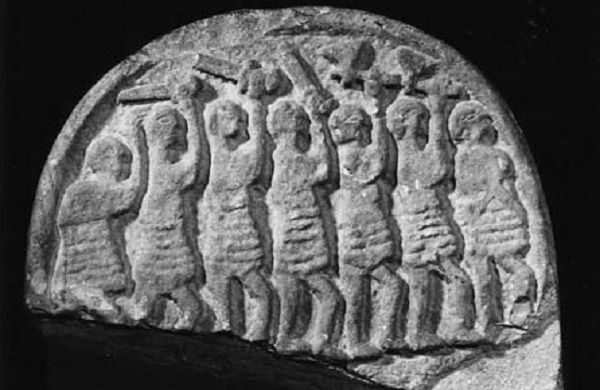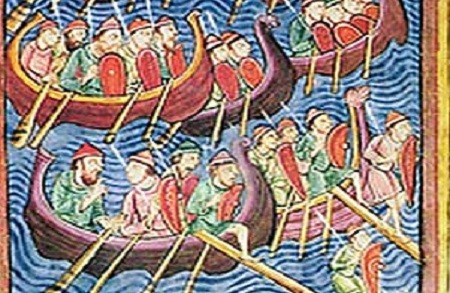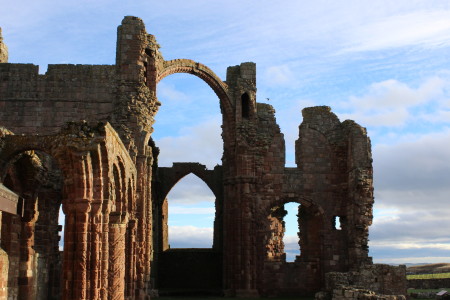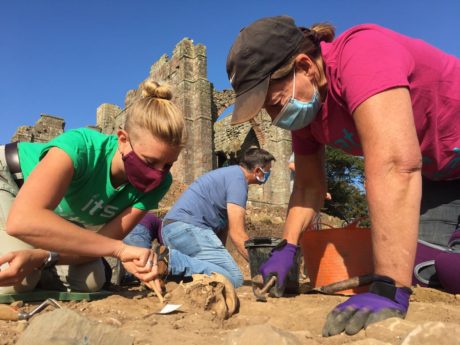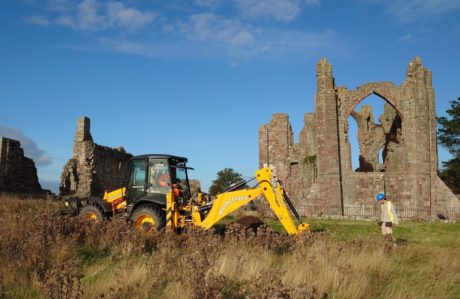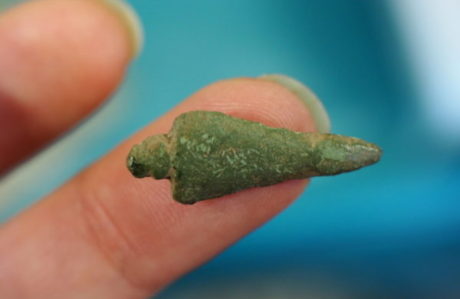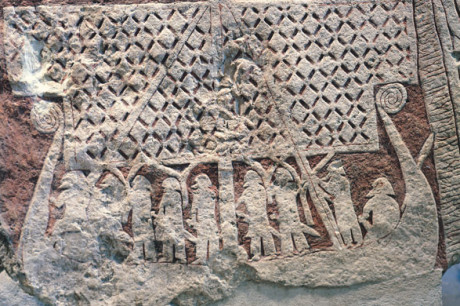
For the monks of Lindisfarne, the 8th June AD 793 was destined to be one of their darkest days. This wealthy monastic community, that formed the religious powerhouse of the great Anglo-Saxon kingdom of Northumbria, was about to meet a formidable foe…
The Anglo-Saxon Chronicle, compiled in the 9th century as an annual record of events, states that there had already been strange portents of doom witnessed in the North prior to this fateful day:
“these were immense flashes of lightening, and fiery dragons were seen flying in the air. A great famine immediately followed these signs…” And then… “on the sixth day before the ides of January, the woeful inroads of heathen men destroyed god’s church in Lindisfarne island by fierce robbery and slaughter”.
Now, there is some controversy about whether January was actually a typo for June, and that’s now the most widely accepted view. Either way, it happened, and once the Viking invaders from Scandinavia landed on the shores of Lindisfarne, they launched a stealthy attack on the church and its unsuspecting inhabitants. We know a great deal about what happened during the raid from the English historian Simeon of Durham (AD1060 – AD1129), who in his chronicle ‘Historia Regum’ writes that:
‘…They came to the church of Lindisfarne, laid everything waste with grievous plundering, trampled the holy places with polluted steps, dug up the altars and seized all the treasures of the holy church. They killed some of the brothers, took some away with them in fetters, many they drove out, naked and loaded with insults, some they drowned in the sea…’
A carved stone found on the island, known as the ‘Viking Raider Stone’ or ‘Doomsday Stone’, could also potentially represent the Viking attack on the monastery, or conversely, Anglo-Saxon warriors defending Lindisfarne from attack.
And it was only the beginning…
This brutal raid on Lindisfarne wasn’t the first of its kind – the Anglo-Saxon Chronicle reports ‘Northmen’ attacks in Wessex four years before, and in a church record of AD792 there are references to defensive structures built in Mercia for protection against ‘pagan seamen’ – but it was certainly the most devastating yet, striking at the very heart of the Christian religion in the North. Many even saw it as a divine punishment for the unholy lives the population of northern England must have been living.
The attack on Lindisfarne marked the beginning of an intensive Viking campaign of pillaging and plundering across swathes of the British Isles throughout the 8th – 9th centuries. In the year following the first assault on Lindisfarne the twin Anglo-Saxon monastery of Monkwearmouth and Jarrow (located near Newcastle) suffered a similar attack, and in AD795 the monastery of St. Columba on the Scottish island of Iona also fell victim to looting.
The Motives?
Monasteries were particular targets for the Viking raiders, as they were well stocked with portable wealth and supplies and were a relatively easy target for the aggressive Norsemen. As one of the most remote and wealthiest of monasteries, Lindisfarne was an attractive target for the Vikings, and one they would return to time and time again. It’s no surprise that many of the best examples of English, Irish and Scottish early medieval church metalwork come not from Britain or Ireland, but from Viking graves in Scandinavia!
Research has also implied that the act of acquiring treasure was just as important as the tangible material gain – the appeal of gaining a reputation in battle, and the potential to improve social status, all served as incentive for Viking raiders.
After the Invasion
The Vikings continued this policy of aggression against Britain for the next century, and by AD870 the Viking conquest of northern and eastern England had fully begun. Despite these continued attacks, the holy community persevered on Lindisfarne, though the monastery was mostly abandoned in AD875; the majority of monks sensibly fleeing, taking the sacred relics of St Cuthbert with them.
Sculptural evidence dating to the period after AD875, including the so-called Domesday Stone, tells us that even then a small community of die-hard monks remained on the island, withstanding attacks by both Viking and Scottish marauders until a new priory church was finally re-established after the Norman invasion in the 12th century. The standing ruins of this new priory can still be seen today.
For those monks that left in AD875, there followed years of upheaval and continued persecution by the Vikings until the community finally settled in Durham in AD995, where Cuthbert’s remain still reside within a dedicated shrine in the Cathedral.
